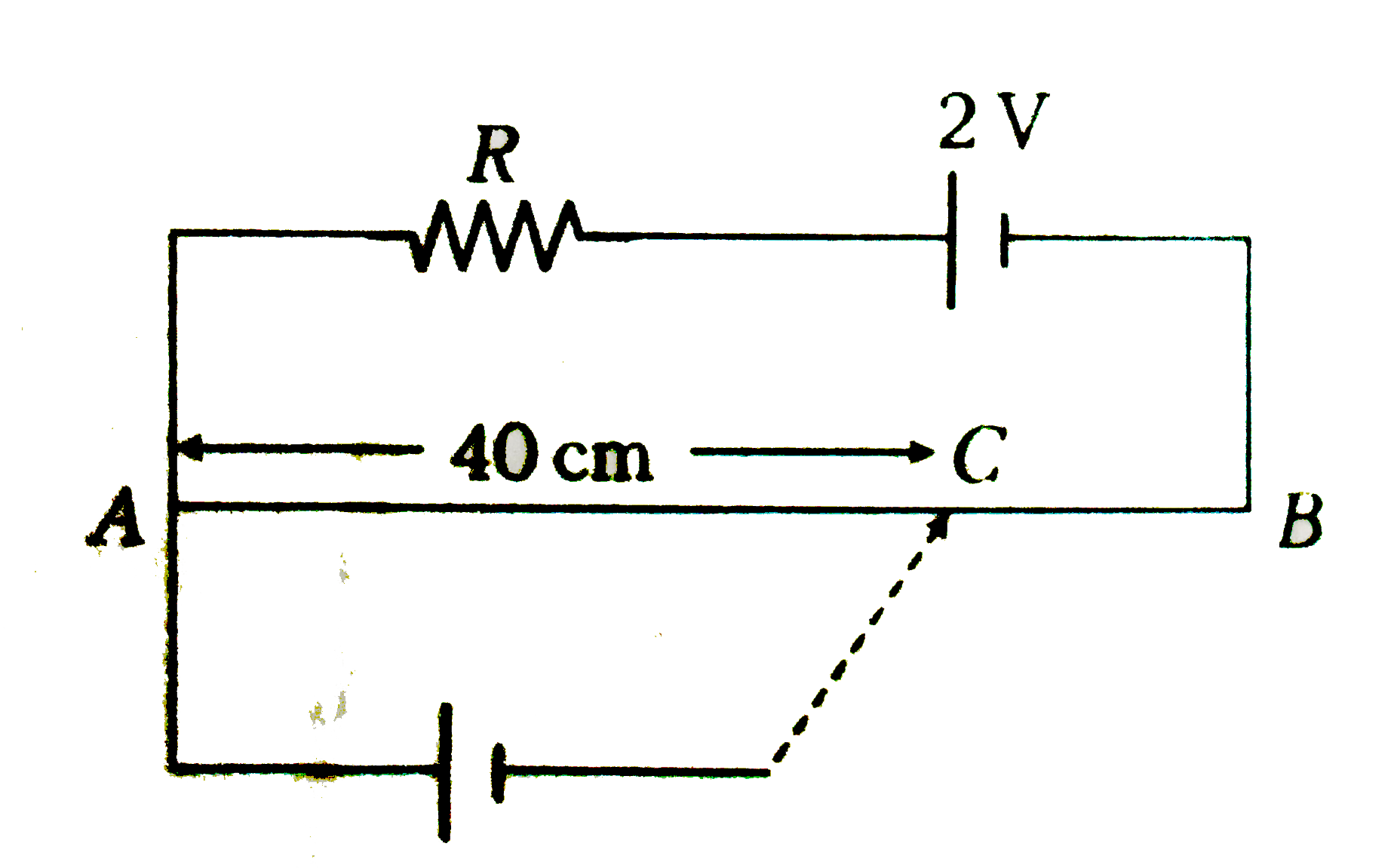A potentiometer wire has a length 2 m and resistance of 10Ω. It is coonnected in series with a resistance of 990Ω and a cell of e.m.f. 2 V. The potential gradient along the wire is
Electromagnetic induction is a phenomenon of producing an induced emf in a conductor or conducting coil due to changing magnetic flux or field.
Theoretical proof of e=−dϕdt :
Numerial :
Given : L=2m,r=10Ω,R=990Ω,E=2V
The curren in the circuit is
I=Er+R=210+990
=21000=2×10−3A
The potential difference across the wire is
V=Ir
=2×10−3×10=2×10−2V
∴ Potential gradient along the wire
=VL=2×10−22 = =10−2V/m
Topper's Solved these Questions
- BOOK - GURUKUL PUBLICATION - MAHARASHTRA PREVIOUS YEAR PAPERSCHAPTER - JULY 2016EXERCISE - SECTION -II21videos
JULY 2016
- BOOK - GURUKUL PUBLICATION - MAHARASHTRA PREVIOUS YEAR PAPERSCHAPTER - FEBRUARY 2019EXERCISE - SECTION-D6videos
FEBRUARY 2019
- BOOK - GURUKUL PUBLICATION - MAHARASHTRA PREVIOUS YEAR PAPERSCHAPTER - JULY 2017EXERCISE - SECTION-I12videos
JULY 2017
Similar Questions
A potentiometer wire has a length 2 m and resistance of 10Ω. It is coonnected in series with a resistance of 990Ω and a cell of e.m.f. 2 V. The potential gradient along the wire is
View SolutionA potentiometer wire is 10 m long and has a resistance of 2Ω/m. It is connected in series with a battery of e.m.f. 3 V and a resistance of 10Ω. The potential gradient along the wire in V/m is
View Solution
Knowledge Check
- Question 1 - Select One
A potentiometer wire of length 10m and resistance 20Ω is connected in series with another resistance of 80Ω and a battery of emf 4V. The potential gradient on the wire will be (in mV/cm)
A0.8B0.16C0.2D0.4 - Question 2 - Select One
A potentiometer wire 10m long has a resistance of 40Ω. It is connected in series with a resistances box and a 2 v storage cell. If the potential gradient along the wire is 0.01Vm the resistance unplugged in the box is
A760ΩB260ΩC1060ΩD960Ω - Question 3 - Select One
AB is a potentiometer wire of length 100 cm and its resistance is 10Ω. It is connected in series with a resistance R = 40 Ω and a battery of emf 2 V and negligible internal resistance. If a source of unknown emf E is balanced by 40 cm length of the potentiometer wire, the value of E is
 A0.8VB1.6VC0.08VD0.16V
A0.8VB1.6VC0.08VD0.16V
A potentiometer wire of length 1m has a resistance 20Omega .It is connected in series with a resistance R and a cell of emf 2 volts.If potential gradient is 1V/m .Find R
View SolutionA potentiometer wire, 4 m long and resistance 10Ω, is connected in series with a resistance of 1988 Ω and a cell of emf 2V and internal resistance 2Ω. What is the potential gradient along the wire?
View SolutionThe potentiometer wire of length 200cm has a resistance of 20Ω. It is connected in series with a resistance 10Ω and an accumulator of emf 6V having negligible internal resistance. A source of 2.4V is balanced against length 1 of the potentiometer wire. Find the length l of the potentiometer wire. Find the length l
 View Solution
View SolutionA potentiometer wire , 4 m long and having a resistance of 10 Ω, is connected in series with an external resistance of 38Ω and a cell , of emf 2 V and internal resistance 2Ω. Calculate the potential gradient along the wire.
View SolutionA potentiometer wire of length 100 cm has a resistance of 10Ω. It is connected in series with a resistance R and cell of emf 2V and of of 40cm of the potentiometer wire. What is the value of R?
View Solution

